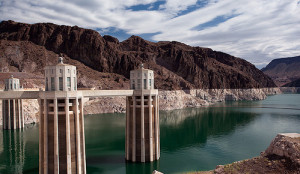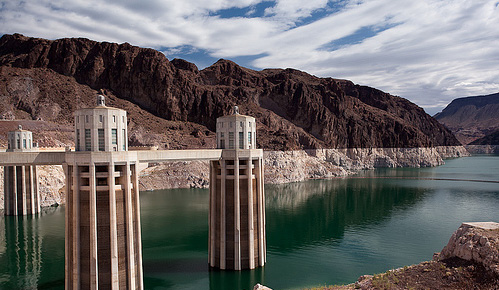
Lake Mead pictured in 2010.
As of this week, Lake Mead’s levels are hovering at 1084 feet above sea level, which is the lowest level for this time of year since the lake filled in the 1930s. While current conditions are good enough to prevent a shortage declaration on the Colorado River this year, such a declaration looms in 2017 and beyond. According to guidelines established in 2007 for river operations, a shortage declaration is triggered when Lake Mead, the reservoir that supplies the Lower Colorado River basin, including California, has a projected elevation below 1075 feet on January 1. Resulting cutbacks, should they occur, would first impact Arizona and Nevada, but nevertheless the need for California water agencies to be vigilant – and united – is critical and points to the importance of the partnerships established by the Quantification Settlement Agreement (QSA).
The QSA is the framework by which California has already reduced its Colorado River use to its historical allotment of 4.4 million acre-feet per year. That mark has been met largely through the Water Transfer Agreements between the San Diego County Water Authority, the Imperial Irrigation District and the Coachella Valley Water District. IID is implementing extraordinary conservation through funding provided by the Water Authority and CVWD. For its part, the Water Authority is paying $631 an acre-foot for the conserved water as part of its transfer agreement with IID. The conserved water transfer is currently ramping up to a total transfer of 200,000 acre-feet per year to the Water Authority for a 45- to 75-year period.
Through the QSA, California has cut back its water use at a critical time when conservation is key to addressing an extended period of drought. However, with Lake Mead at historical lows, California faces pressure to do more. This is why it becomes critical for us to stand together as partners to address any further challenges to the State’s water use and to explore options together to help replenish Lake Mead.
The U.S. Bureau of Reclamation has the difficult task of managing the Colorado River and its critical reservoirs, and is working to develop long-term solutions during what is expected to be a continued period of drought. The Bureau, however, does not function in a vacuum and needs participation from all the Colorado River Basin States. California water agencies, including QSA partners, need to make their voices heard in a unified manner on the critical management of the river and the struggle to maintain water levels at Lake Mead.
